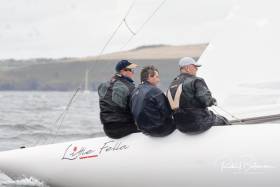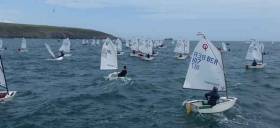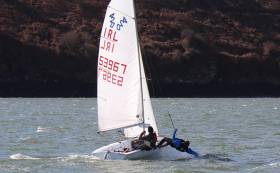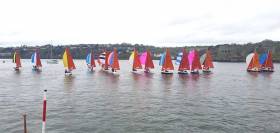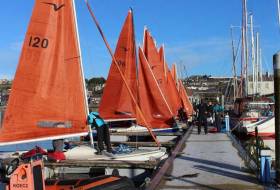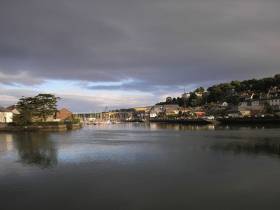Displaying items by tag: Kinsale
Kinsale Yacht Club Dragon Sailors in Control at South Coast Championships (Photo Gallery Below)
After four races at the 2017 Dragon South Coast Championship, locals Cameron Good, Henry Kingston and Simon Furney have the overall lead from Royal St. George's David Williams and Peter Bowring writes Bob Bateman.
See results and photo gallery below.
The Dublin Bay boat has the same eight points as the Kinsale Yacht Club leader but double wins today gives Good the advantage in the nine–boat fleet.
Kinsale boat Shawn Kingston's Grey Hare is third and another Kinsale entry, Adrian Bendon's Mar J is fourth.
This morning's racing schedule was put forward to 11am due to a wet windy forecast but it turned out to be light winds on the way out to the first start at the Old Head of Kinsale. Winds were not long in filling in, however, and 15 /18 knots from west–south–west and a lumpy sea produced classic Kinsale conditions.
Williams' Phantom led at the first windward mark but a gybe set from Good proved to be winning move as got into the lead and held on til the finish.
Racing continues tomorrow. The Race Officer is Kinsale's own Alan Crosbie.
Dragon South Coast Championship after four races
| 1 | IRL211 | Little Fella | Cameron Good | Henry Kingston | Simon Furney | KYC | 8 | 4 | 2 | 1 | 1 |
| 2 | IRL176 | Phantom | David Williams | Peter Bowring/Hilary Murray | Arthur Mehigan/Conor Grimley | RStGYC | 8 | 3 | 1 | 2 | 2 |
| 3 | IRL188 | Grey Hare | Shawn Kingston | Tony Kingston | Harry Lewis | KYC | 15 | 2 | 5 | 4 | 4 |
| 4 | IRL156 | Mar J | Adrian Bendon | Choryna Kiely | Matthew Beecher | KYC | 18 | 1 | 3 | 7 | 7 |
| 5 | IRL201 | Jaguar | Martin Byrne | Conor Byrne | Adam Winkelman | RStGYC | 20 | 5 | 9 | 3 | 3 |
| 6 | IRL695 | Magic | Warren Brown/Kevin Hayes | Killian Murphy | Clare Hayes/Eamonn Timoney | GHYC | 22 | 6 | 6 | 5 | 5 |
| 7 | IRL180 | Serafina | Maeve Cotter | Daniel Murphy | Brian Goggin | KYC | 24 | 8 | 4 | 6 | 6 |
| 8 | IRL110 | Aphrodite | Peter Hayes | Tiernan Brown | Killian Forde/Ruairi Brown | GHYC | 31 | 7 | 8 | 8 | 8 |
| 9 | IRL157 | Tenacious | Anthony O'Neill | Dave Horgan | Eoghan O'Neill | KYC | 36 | 9 | 7 | 10 | 10 |
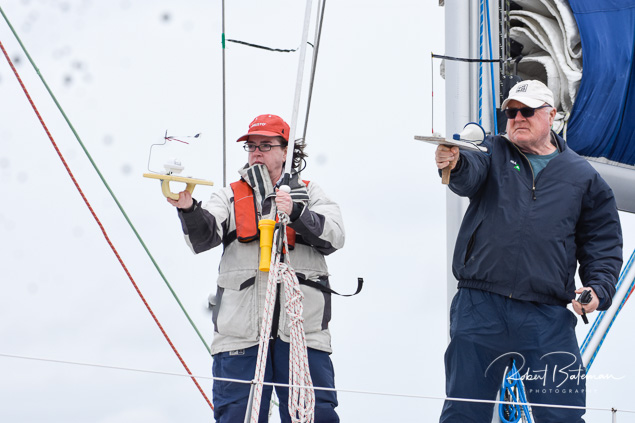
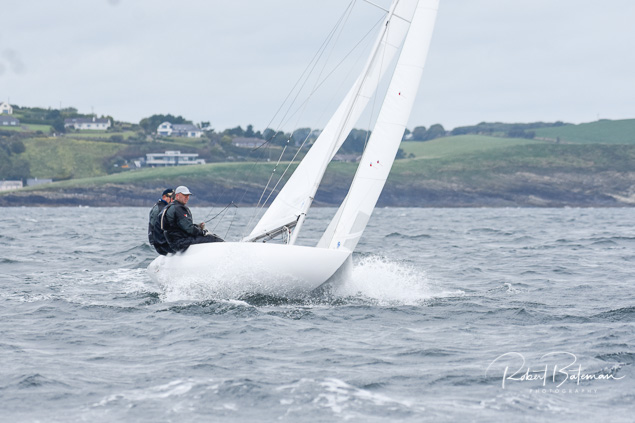
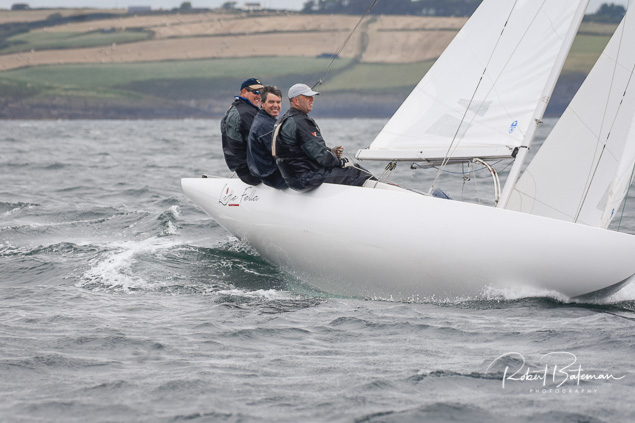
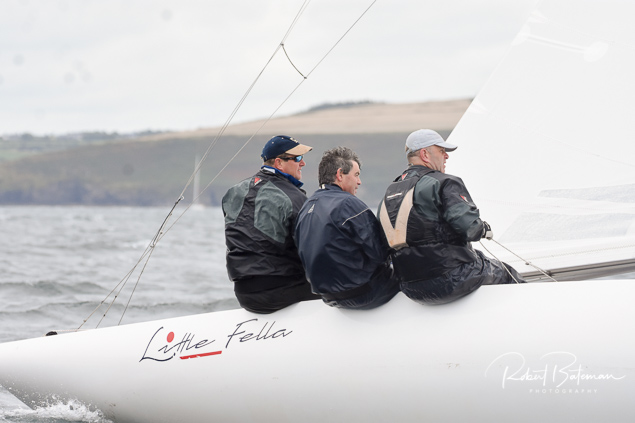
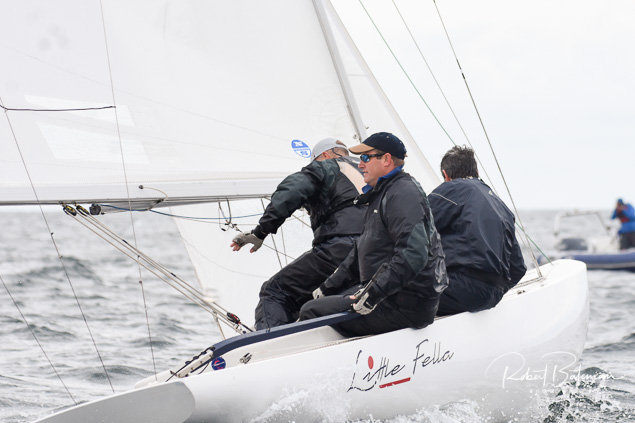
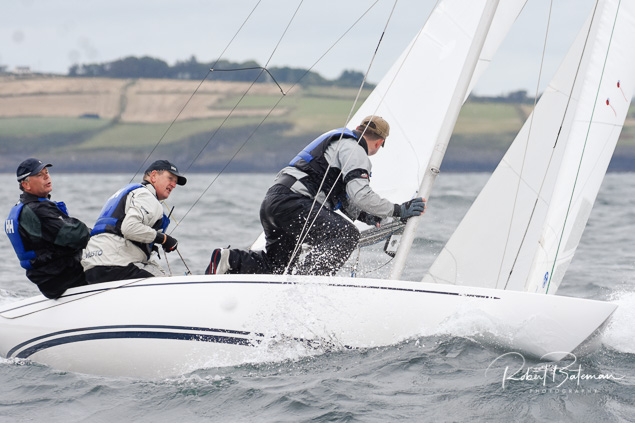
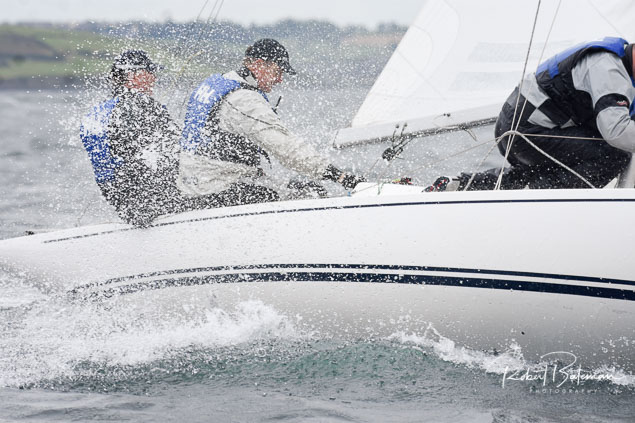

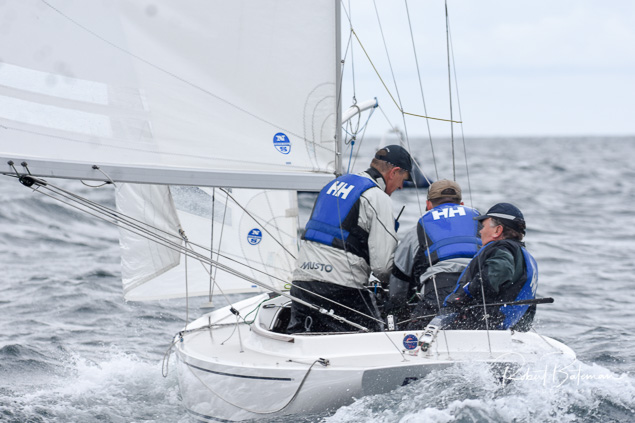
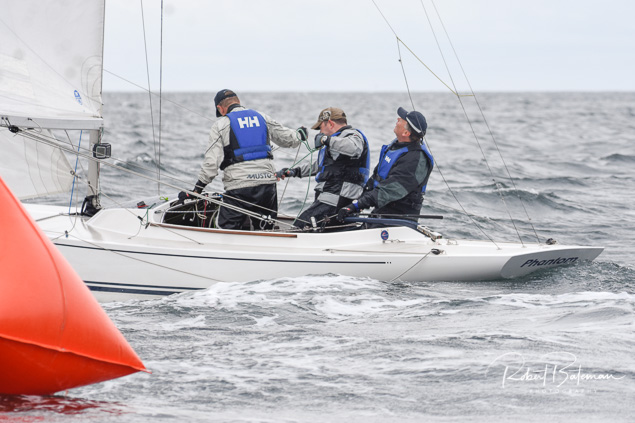
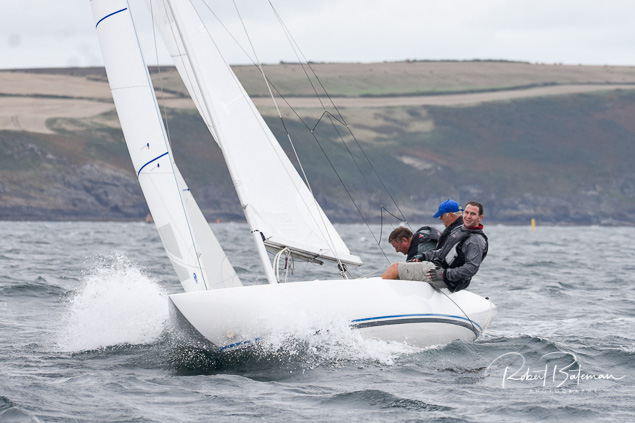
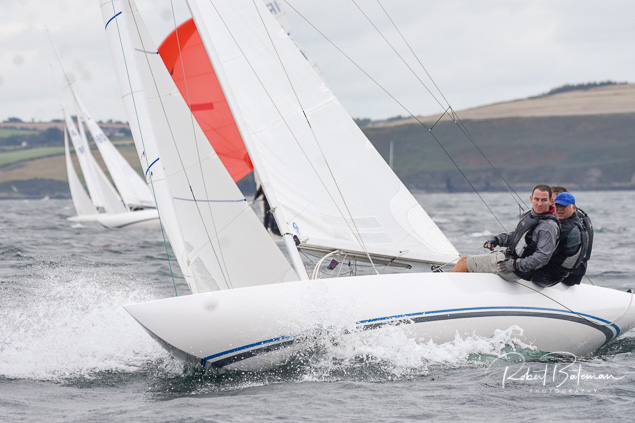

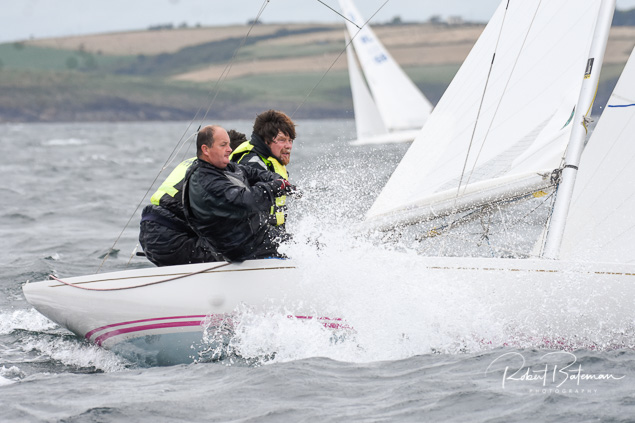
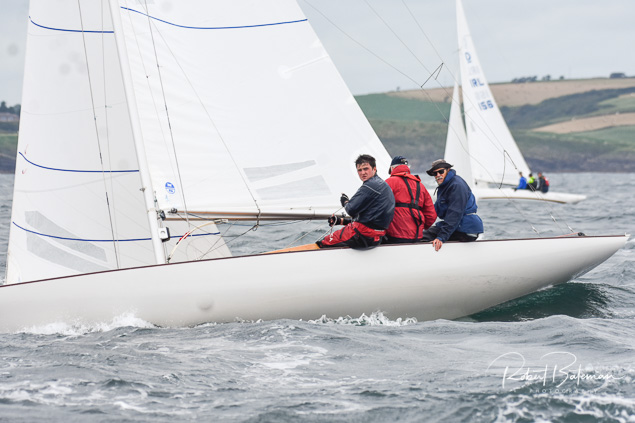
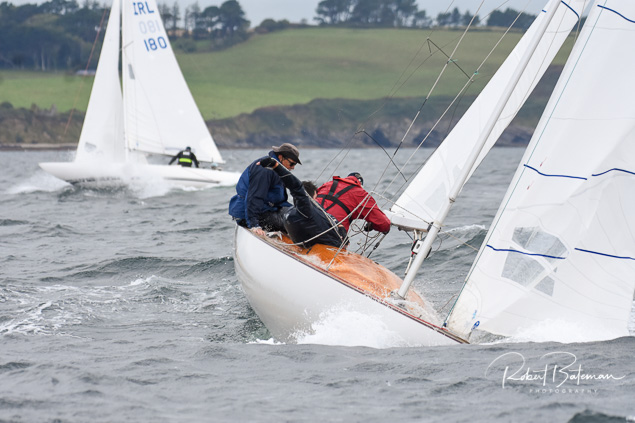

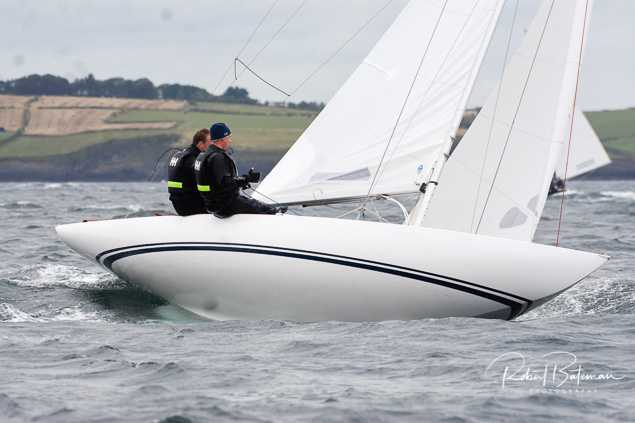
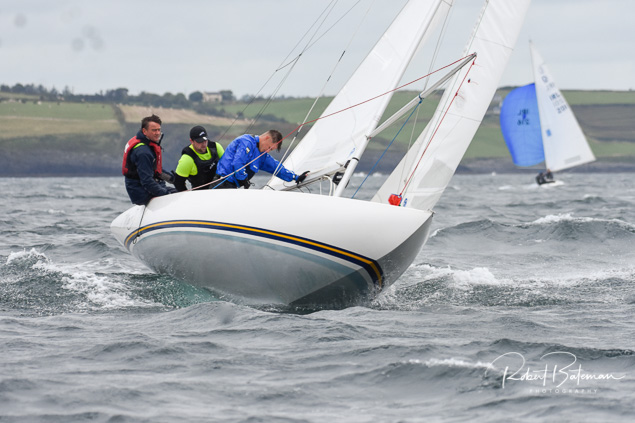
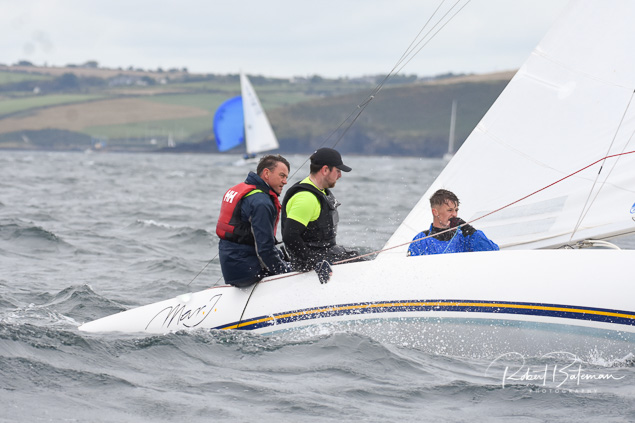
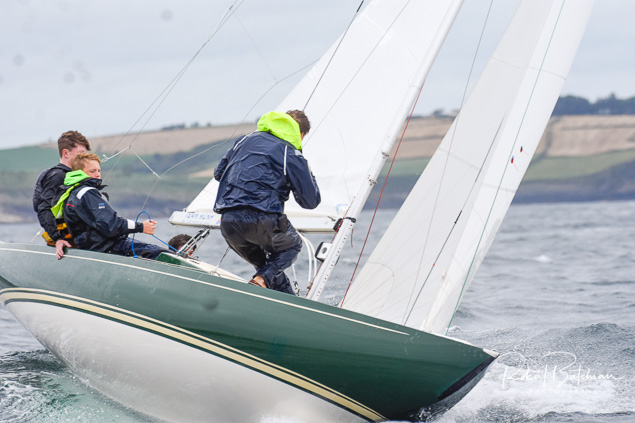
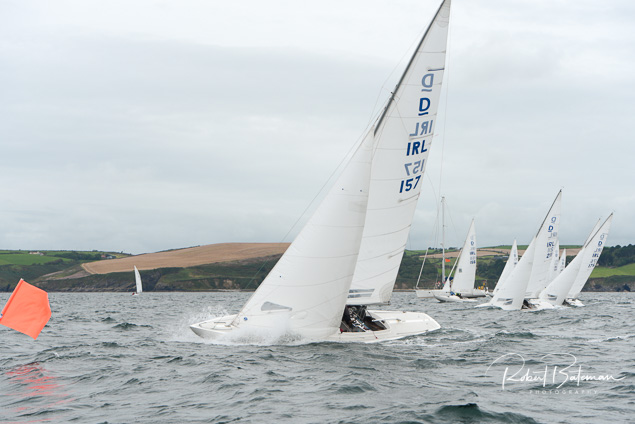
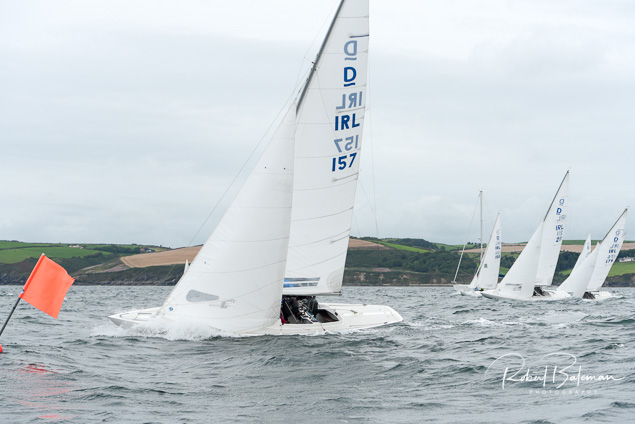

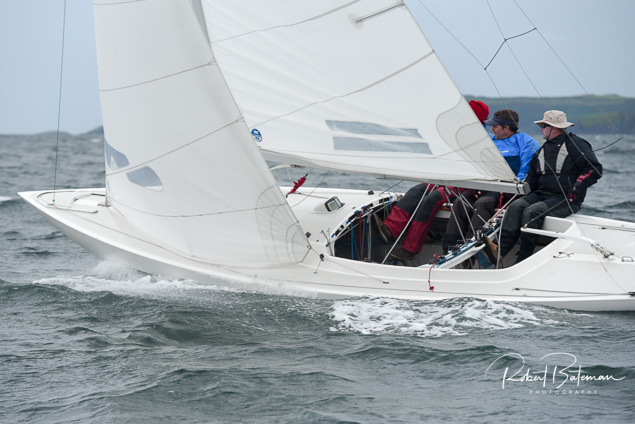
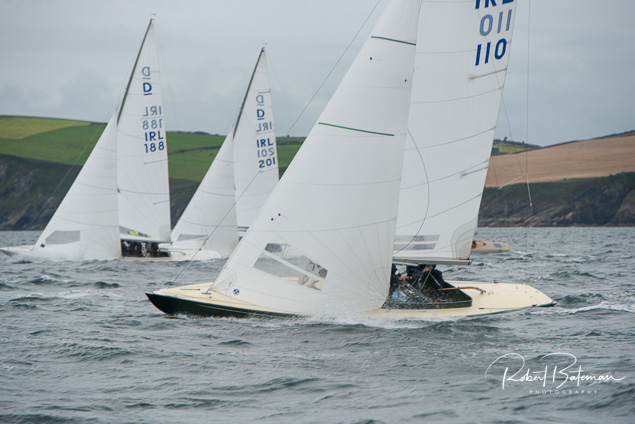
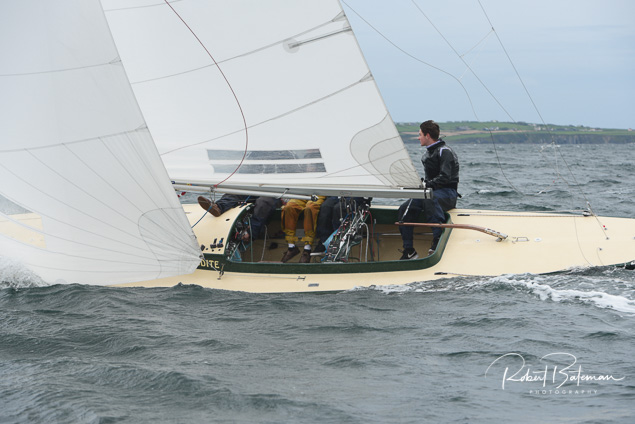
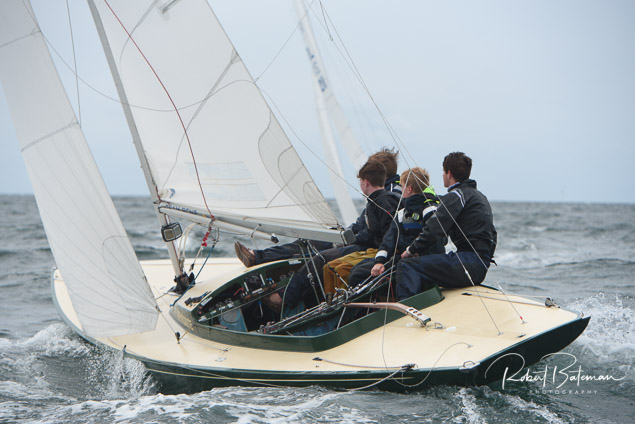
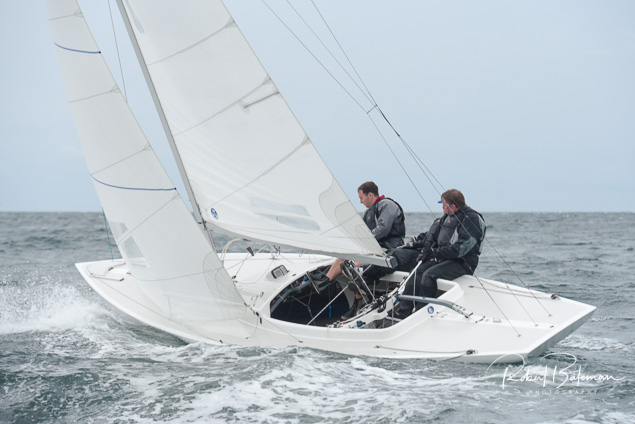
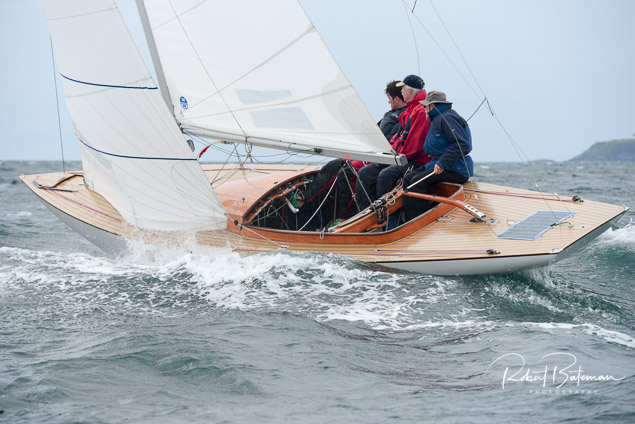
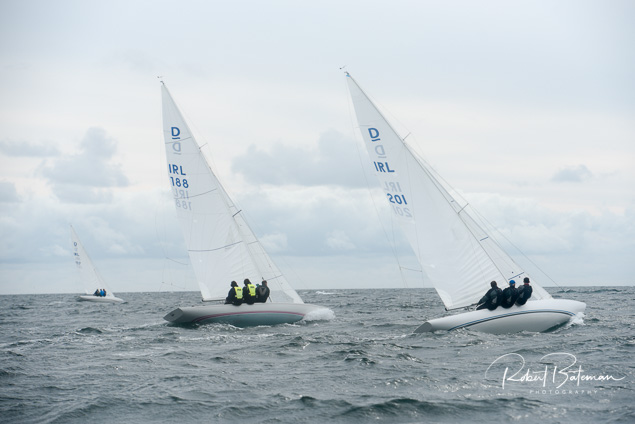
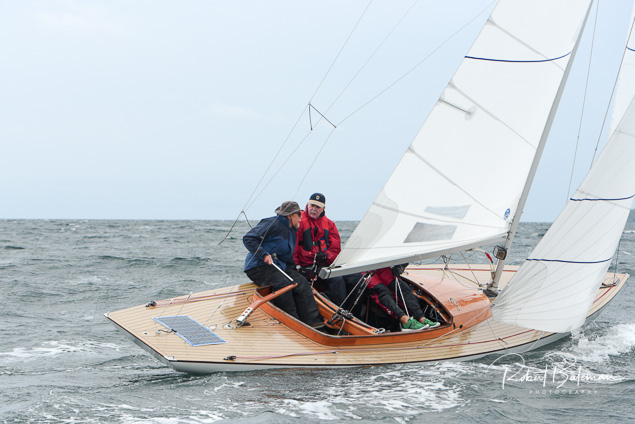
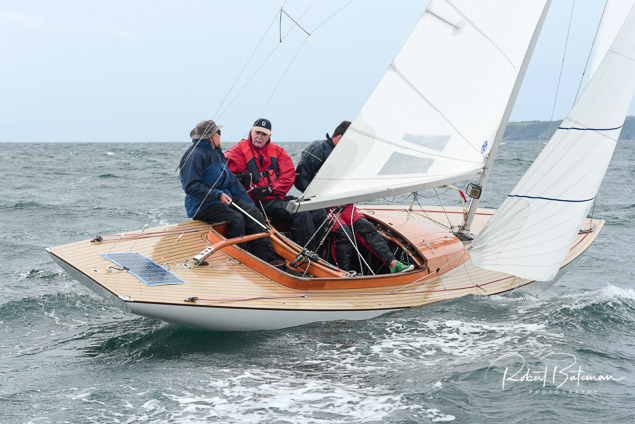
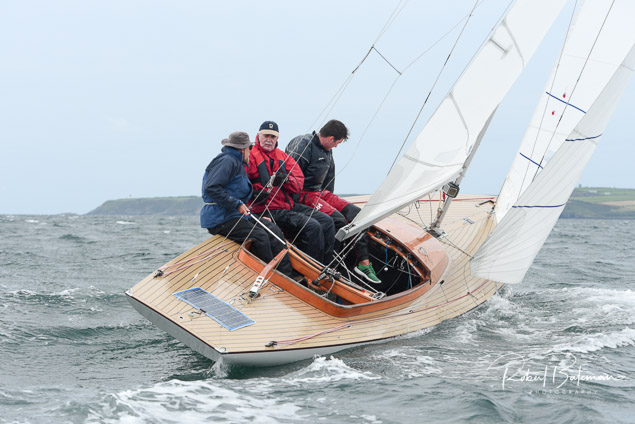

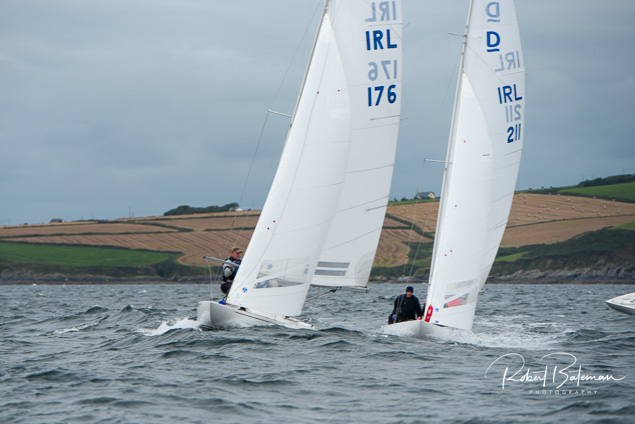

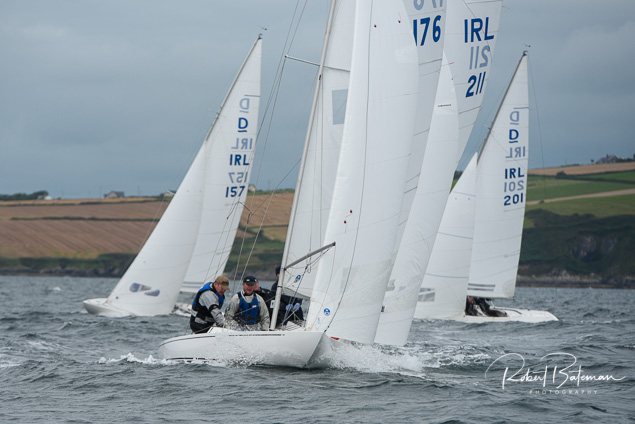
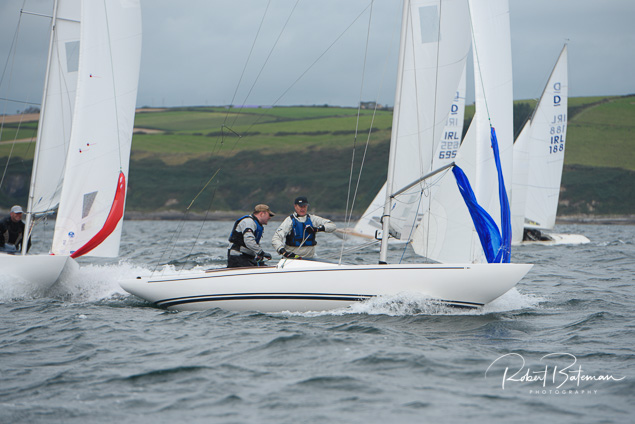

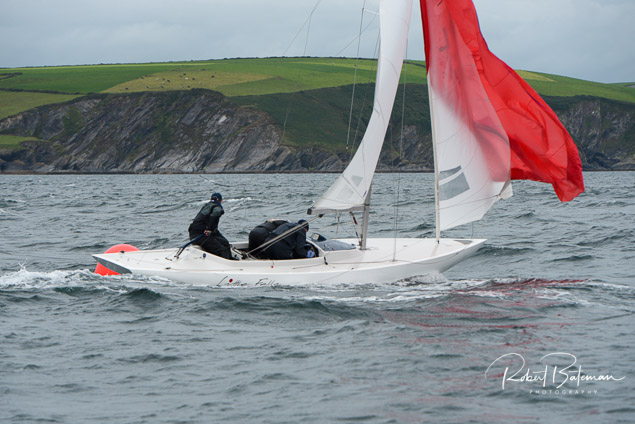
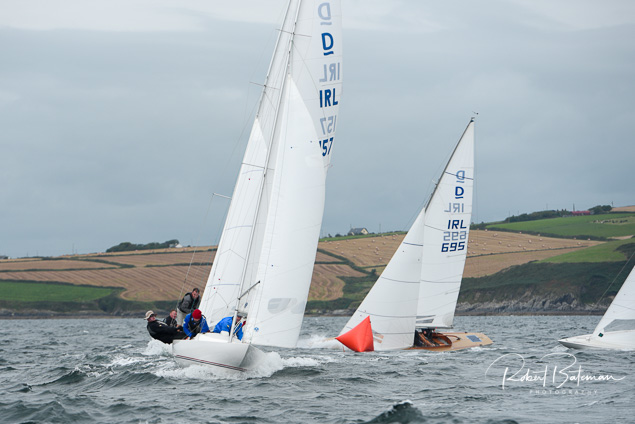
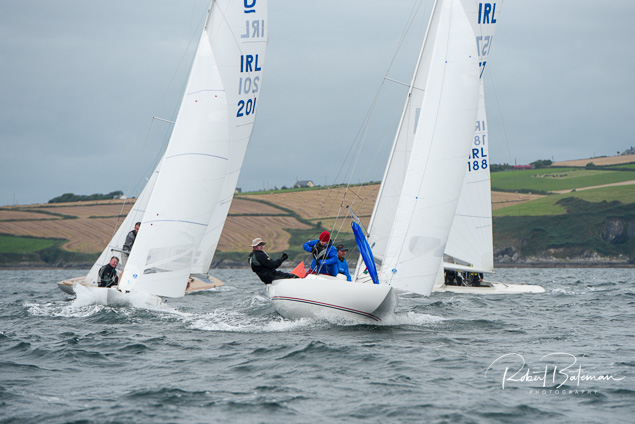
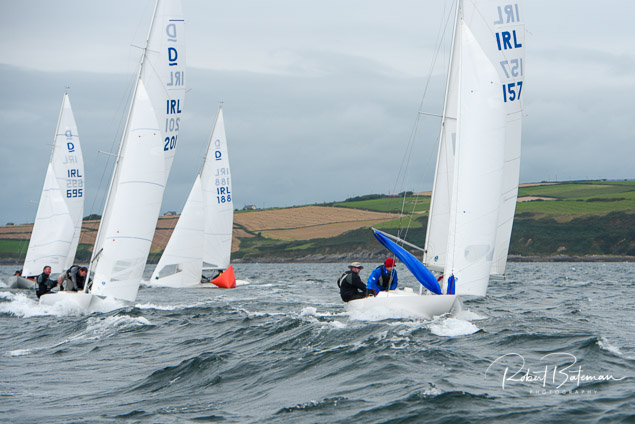
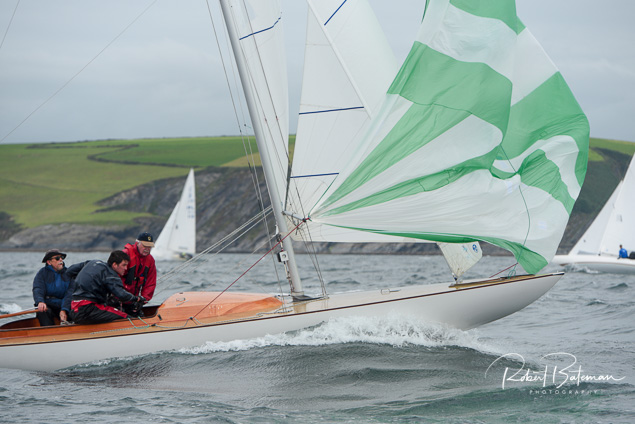
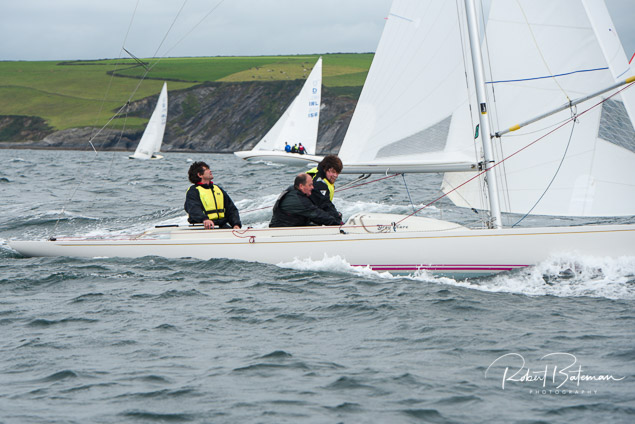
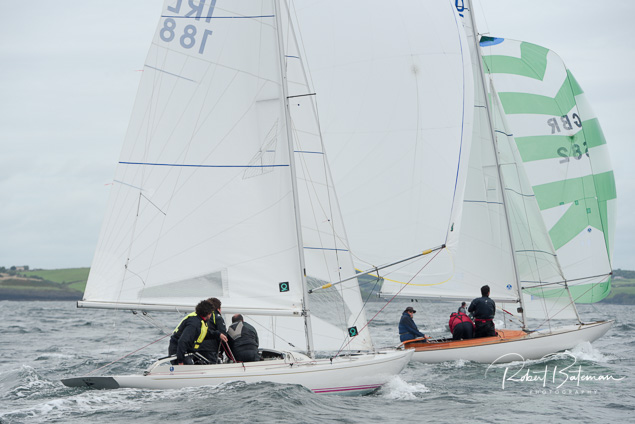

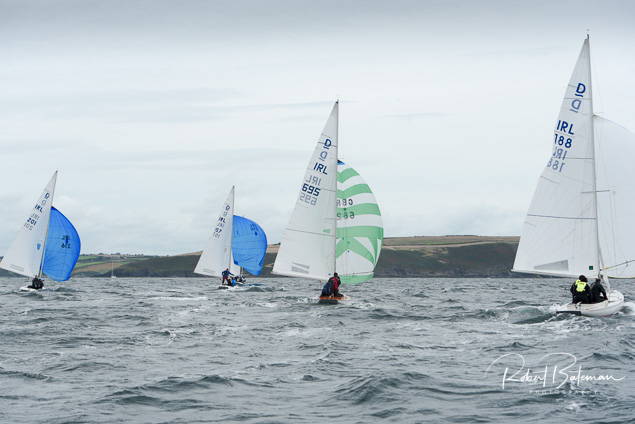
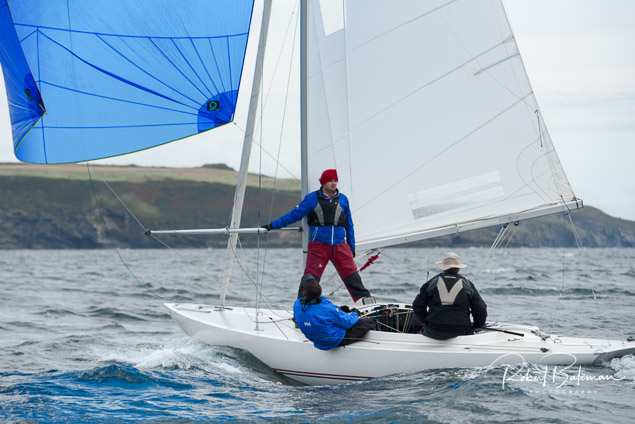

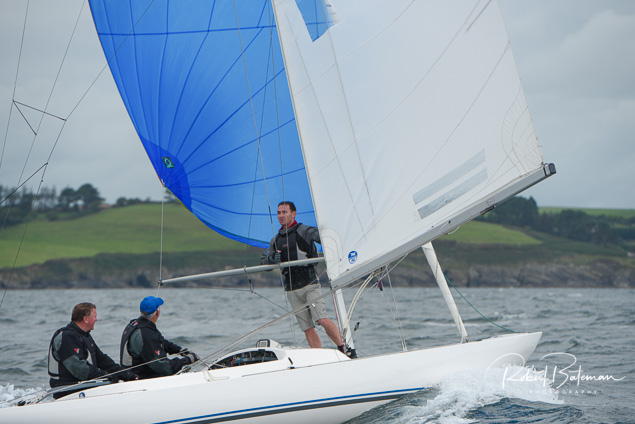
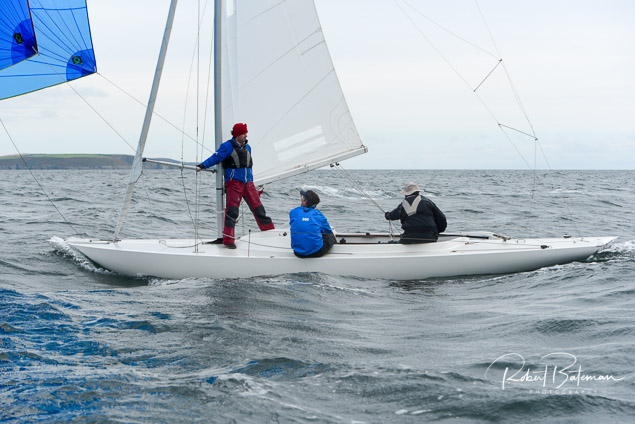
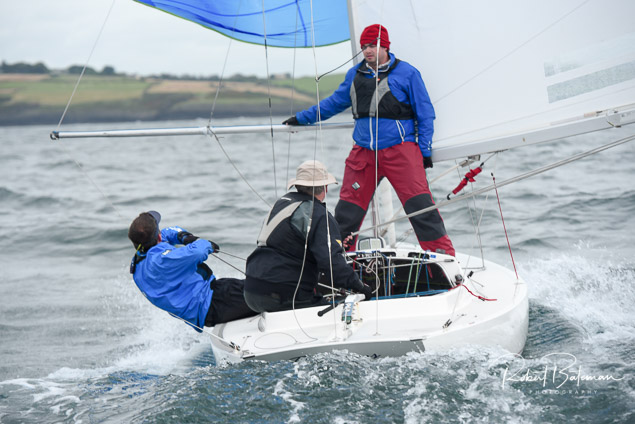

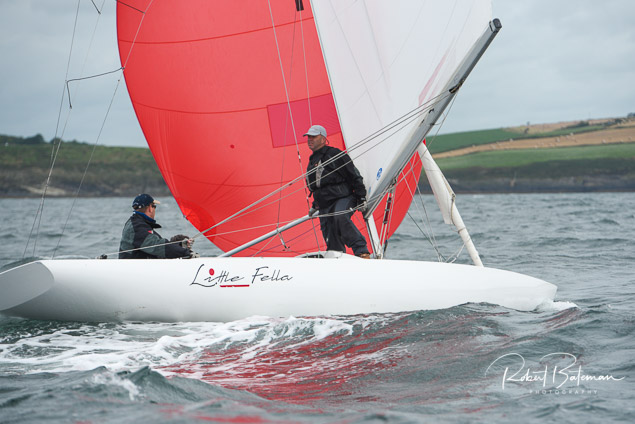

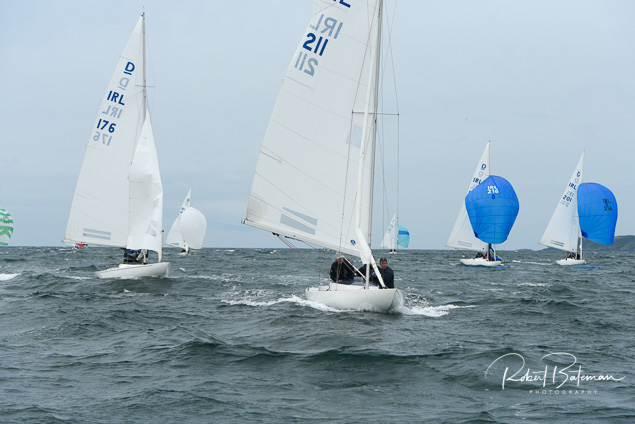
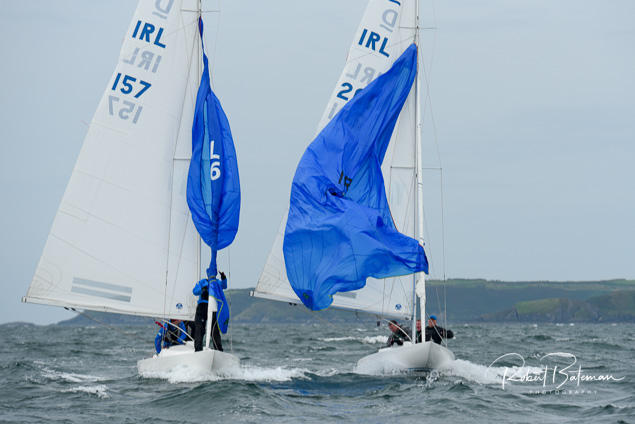
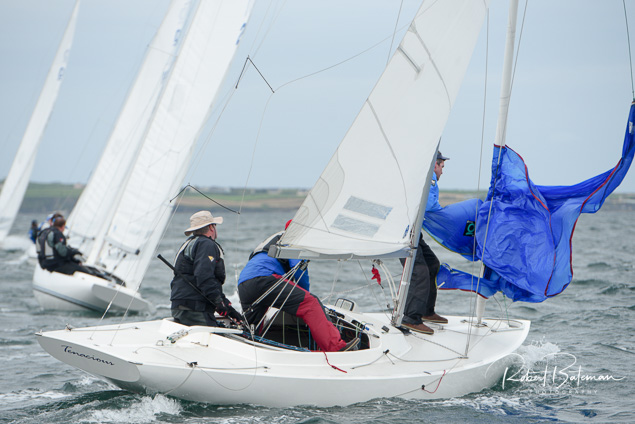
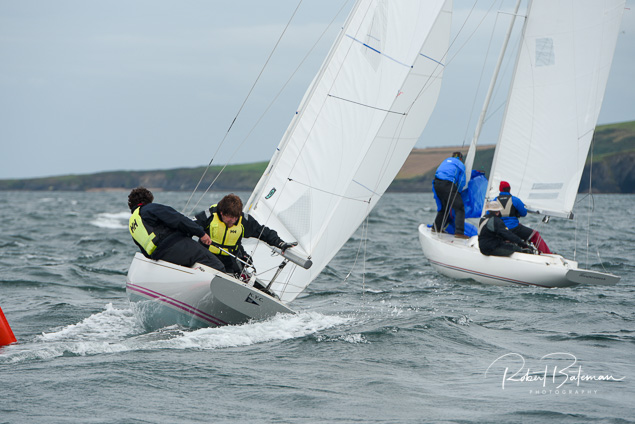
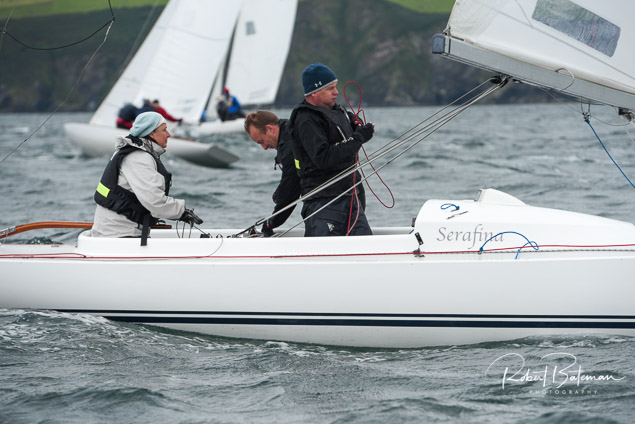
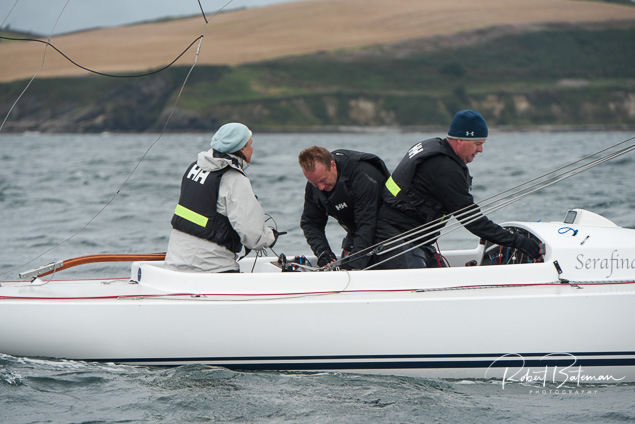
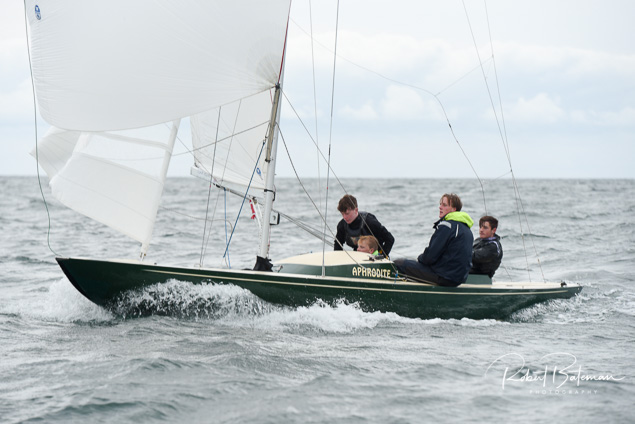
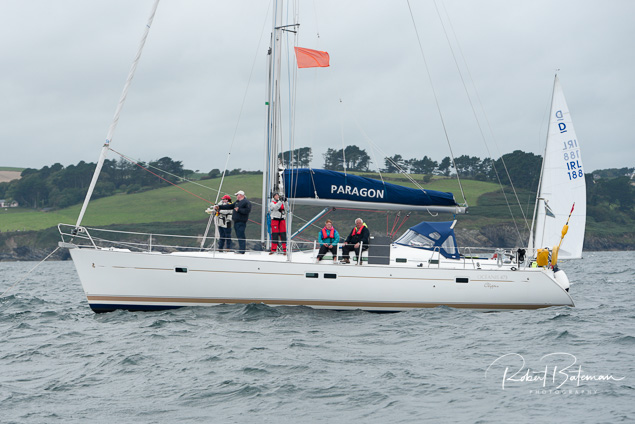
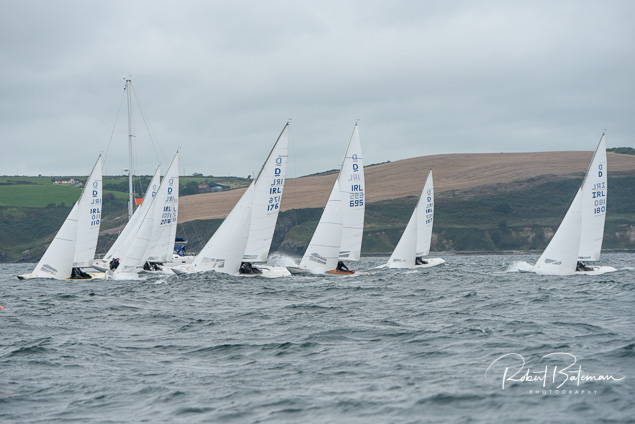
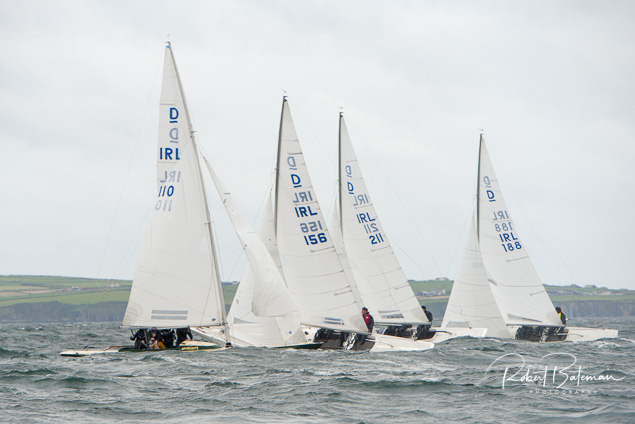
#RNLI - Lifeboat crews from Ireland will feature in a new 12-part Last year alone, RNLI lifeboats in Ireland documentary for the BBC.
Saving Lives at Sea, showcasing the lifesaving work of the RNLI, starts next Wednesday 16 August at 8pm on BBC Two.
And the first episode will include the dramatic rescue of three fishermen from a sinking trawler and the rescue of 30 people from the Astrid tall ship in Kinsale.
The 12-part series features real rescues carried out by the charity’s lifeboat crews around Ireland and the UK, and gives a unique insight into the lives of the charity’s volunteer lifeboat crew members, who rescue thousands of people and save hundreds of lives around our coastline every year.
From Ireland, the series will feature lifeboat crews from Castletownbere and Kinsale in Cork, Skerries in Dublin and Bangor on Belfast Lough.
Castletownbere will be in episode three, as the crew rescue a lone sailor in storm conditions and rescue two fishermen from a boat that sinks.
Saving Lives at Sea features real-life rescue footage accompanied by heart-warming and emotive testimonials from the crew and the people they rescue.
The series has been filmed over the past year, with lifeboat crews using RNLI and special cameras and welcoming filmmakers into their day-to-day life. Rescues from the RNLI’s archives are also revisited.
Last year alone, RNLI lifeboats in Ireland launched 1,136 times rescuing 1,649 people.
Saving Lives at Sea will be broadcast weekly from Wednesday 16 August to Wednesday 1 November on BBC Two at 8pm. The series is made for the BBC by Blast! Films.
Unseasonal weather provided very challenging conditions for the 145 entrants in The Davy Munster Optimist Championships at Kinsale Yacht Club. Sailors travelled from as far away as Dublin and Galway for the event. Six races were planned over Saturday and Sunday.
Day 1 saw the Regatta Fleet grounded as the winds were just too strong but they had a full morning of shore based activities which included learning about wind, tides and the RRS. The AP flag was flown for the Senior and Junior fleets while the Principal Race Officer, John Stallard, waited for conditions to abate. The decision was made to remain in the outer harbour and after a 2 hour delay racing got under way. With torrential rain and gusting winds the conditions were testing for all on the water – sailors and committee/support boats alike– this combined with the delayed start meant that two races were completed.
Day 2 and both fleets got afloat on time. With 10-12 knots out of the southwest the Senior and Junior fleets got under way with minimal delay. There was quite a swell outside the harbour which provided a testing beat for the fleets and caused some to retire from the race. However both the Senior and Junior fleets completed the race in under 50 mins. The wind had shifted more southerly so after readjusting the course Race 2 got off with minimal delay. By now the swell was building somewhat and winds were 12 – 14 knots but the fleets were really enjoying sailing in the open waters outside Kinsale Harbour. As the wind had settled into the SSW the course stayed true and the 3rd race got underway within minutes of the final boat finishing. Competitors were quite happy to head ashore after Race 3 as the swell had proved to be quite tiring for all on the water.
The Regatta Fleet got afloat on Day 2 but under very testing conditions. The Regatta Fleet Race Officer, Siobhan Keane Hopcraft, decided to keep them in the inner harbour. Even in there the winds too strong for some however the fleet got 4 races sailed which was an achievement for all given the conditions.
Results:
Senior Fleet
Gold
1st Rory O’Sullivan RCYC
2nd Leah Richard NYC
3rd Hugh Turvey HYC/NYC
Silver
1st Kei Walker RStGYC
2nd Adam Doyle TBSC
3rd Ciara O’Regan RStGYC
Junior Fleet
Gold
1st Johnny Flynn HYC/RStGYC
2nd Luke Turvey HYC/NYC
3rd Fiachra McDonnell RBYC
4th Sam Ledoux NYC 4th Killian Reidy FYC
5th Adam Walsh LRYC/HYC 5th Jessica Riordan RStGYC
Silver
1st Lucy Bateman RCYC
2nd Fiachra Farrelly HYC
3rd Rocco Wright HYC
Fair Sailing Award Aoibhin Farrelly HYC
Best Local Sailor Regatta Fleet Harvey Matthews
Best Local Sailor Junior Fleet Alejandra Peleteiro
Best Local Sailor Senior Fleet James Dwyer Matthews
Prof O'Connell Now Walking on Water?
Is he a Diamond geezer or isn’t he? Has he Juice Jumped? Is this the Prof walking on water? Or is he riding at least two horses at once? Maybe it’s an attempt to give the term “Dear Departed” a whole new meaning? You tell us.
All we know this pic in Kinsale today is of Prof O’Connell spreading it about a bit, as he was aboard the Quarter Tonner Diamond (that’s her he’s leaving) to get her tuned, yet was also seen at the helm of Jump Juice and doing a bit of winning.
He would probably also have liked to have had a hand in Justin Lucas’s Optimist performance, giving him the tactical advice which swept the board in the Youth Nationals today at Ballyholme. Why be on only two boats at once when you can be everywhere at the same time, a universal presence?
The Great All Ireland Chowder Cook-Off Is This Sunday!
#ChowderCookOff - Save the date as this Sunday 9th April is the All Ireland Chowder Cook-Off that brings 32 counties to Kinsale to compete for the title of All Ireland Chowder Champion!
As reported on Afloat the small commercial port in scenic west Cork is renowned for its culinary status thanks to the Kinsale Good Food Circle who are organising the Chowder Cook Off.
Tickets are €15 available at the door of the mega marquee on the lawn of Acton’s Hotel. You are the judge and decide who will be crowned all Ireland Chowder Champions!
So Cast Your Vote in the 7th All-Ireland Chowder Cook-Off for this coming Sunday.
Kinsale Good Food Circle want your help to find the best chowder chef in Ireland. A representative from each of the 32 counties will compete for the title of “All-Ireland Chowder Champion” at the annual All-Ireland Chowder Cook-Off.
Everyone attending the event will have a chance to vote for their favourite chowder-chef. For further details of the culinary event click here.
There is always something interesting to be reported upon and discussed about the maritime sphere, I believe and so I always want to broadcast interesting stories on This Island Nation.
This week one underlines the importance of maintaining knowledge of our maritime history and passing it onto future generations.
That point was made to me on the quayside at Kinsale on the South Cork coastline where the town’s historical society laid wreaths at a memorial to two brothers, Tim and Mortimer McCarthy from a fishing family in the area, who had both won Polar medals for their service with the world’s renowned Polar explorers - Mortimer with Captain Scott on the Terra Nova Expedition in 1910.
A mountain in Antarctica is named after Mortimer McCarthy. His brother, Tim, was with Shackleton and Tom Crean on the legendary rescue voyage for the Endurance crew from Elephant Island in the James Caird lifeboat. But Tim is not as well-known as Tom Crean. The remembrance ceremony was held a hundred years to the day since Tim McCarthy, was killed while serving aboard the tanker SS Naragansett when it was torpedoed and sunk by the German submarine U44 off the South Coast of Ireland during World War One.
“The memory of these men is part of the history of this maritime town and must be preserved,” said Terry Connolly. “It is important that we remember and that we pass on what we remember to the younger generation so that they can know their history.”
He is correct about passing on our history to the next generation. He also referred to the “connection of the coincidence of history between Polar explorers and Irish revolutionaries” which you can hear about on the programme.
Underlining the ‘Family of the Sea’ concept which I focus in my programme, George Wheeler, whose grandfather was one of the 46 crew that died with Tim McCarthy aboard the Naragansett, travelled from Britain to lay a wreath at the memorial.
DUBLIN RULED BY ‘SHONEENS’ AND ‘WEST BRITS’
Dublin, in the 19th century, was administered by “an over-staffed public service where jobs were got by influence and monetary status rather than competence and ability.” The decision-makers were “mainly Protestants, scorned by the Nationalists as ‘Shoneens’ and ‘West Brits’ ..”
I will leave you to listen to the programme below to hear the full story of this period in Dublin!
LOSS OF R116
And in this edition of the programme we remember the tragedy of the loss of Coast Guard helicopter R116.
All 3 fleets left the marina under blue skies and bright sunshine in Kinsale this morning for the final day of the Kinsale Yacht Club Frostbite Series. A nice breeze of 7 – 9 knots was blowing from the west and it looked like all would have a great days racing. However Mother Nature was playing with the fleets today and before the first race was over conditions had changed dramatically. A squall passed through which peaked at 24 knots and resulted in many of the Topper and Mixed Dinghy fleets capsizing.
In the Mixed Dinghy fleet Micheal O’Suilleabhain and Michael Carroll in the 420 took line honours in the first race but a very strong performance by Tom Good in a Laser 4.7 meant that he took 1st on corrected time. Sean Collins in a Laser Radial was 3rd and Chris Baker in a full rig Laser came 4th. The 2nd race started with the wind blowing 14 – 16 knots and the Race Officer, John Stallard, made the decision to shorten the race rather than risk losing it completely if the wind continued to build. The 420 took line honours again but were unable to pull away from the Lasers sufficiently and Sean in the Radial came 1st on corrected time, Micheal and Michael in the 420 came 2nd and Tom came 3rd in the 4.7. The third race was very challenging for all on the water. Micheal and Michael in the 420 sailed a great race to finish 4 minutes ahead of the fleet which secured them 1st, Tom in the 4.7 came 2nd and Sean in the Radial was 3rd. Micheal and Michael had done enough to win the series with Sean Collins 2nd and Sean Murphy 3rd.
The Topper fleet showed great stamina and resilience today. Unfortunately the squall resulted in 2 boats retiring from the first race. Dorothy Matthews took line honours with Maeve Buckley 2nd and Francesca Lewis 3rd. This resulted in the series being wide open. In the second race Maeve managed to pull ahead and take 1st with Dorothy 2nd and Francesca 3rd. By now the Topper fleet were very wet and cold and so the decision was taken to send them home. Maeve had done enough to take the title and receive the new Destiny Topper trophy, kindly presented to the club by Bruce & June Matthews. Francesca had sailed a very steady series and was 2nd with Emer Heery 3rd.
17 Squibs sailed today with the title there for the taking. In the first race most of the fleet opted to get out of the ebbing tide and go up the left side of the course. Pulpo, Commodore Tom Roche & Finbarr O’Regan opted for the right side and this looked like it would pay off until the main halyard popped out and they lost ground. Allegro, Colin Dunne & Rob Gill, were rock steady on the runs, despite the challenging conditions, and this consolidated their lead giving them a 1st. Purfling, Barry Ryan & Donal Small came 2nd and Viking Gold, Jeff & Claire Cochrane 3rd. The second race saw Allegro round the windward mark in the lead and they held on to take another 1st. Breakaway, David Matthews & Elizabeth Bond, put in a very strong performance and took 2nd with Sensation, Denis & Brid Cudmore 3rd.
By now the conditions were causing gear failure and fatigue and only 11 boats started the final race. On the first run 5 squibs arrived to the leeward mark together. Unfortunately Breakaway had to retire on the second beat. Allegro and Fuggles, Jeff Condell & Eoghan O’Mahony, were leading the fleet on the final beat with Sensation close behind. Allegro pulled away on the final run to take 1st and secure the title. Fuggles came in 2nd and Sensation 3rd. This was enough for Sensation to take 2nd overall with Fuggles 3rd.
Flukey Winds For Sailing Frustrate Fleets At Kinsale Yacht Club
Light conditions saw a fleet of 29 boats leave Kinsale Yacht Club Marina and Dinghy Park this morning for Week 2 of the Osean74 Frostbite Series writes Michele Kennelly. No racing took place last week due to 29 knots blowing off Charles Fort. Such a change in conditions, the AP had to be flown at 10.55 hrs as there was no wind in the harbour. However it filled in as forecast from WNW and at 11.15 hrs the Mixed Dinghy fleet got underway in a very light 4 knots, followed by the Toppers and Squibs.
Racing was extremely challenging for all sailors on the water today. The first race saw all 3 fleets having difficulty reaching the finish line as by now there was a strong ebbing tide and the wind was dying. Several squibs bunched together when only a few dozen metres from the finish line, including several frontrunners, and having taken a higher line from the leeward mark, Bateleur, John Stanley , who today sailed with Mary Claire O’Keeffe, got clear air and line honours, followed closely by Eala, John & Bill Thuillier, and Espresso, Victor Fusco & Ruth Ennis in 3rd.
Newcomers to the Squib Fleet in Mucky Duck, Michael and Sean O’Sullivan sailed a great race to come 4th. In the Mixed Dinghy Class Sean Murphy, Laser, Sean Collins, Laser Radial and Chris Baker, Laser are all jockeying with the 420 sailed by Micheal O’Suilleabhain & Michael Carroll for positions at the top of the leaderboard.
With the wind now blowing from SSW the second race got underway at 12.35 hrs. However after just a few minutes it died so the N flag went up. All three fleets returned to the starting area and we waited. Patience is a virtue – especially when sailing – and the breeze filled in nicely. Mixed Dinghies and Toppers went off together at 12.52 hrs followed 5 mins later by the Squibs. In the Mixed Dinghy Fleet Sean Murphy, Laser, and Sean Collins, Laser Radial, were only 1 second apart on the finish line which gave Sean Collins the race on PY. Gary Horgan, Laser, sailed a great race to take 3rd on the line and 3rd on corrected time.
In the Squib Fleet, Allegro, Colm Dunne & Super Sub Fiona, came around the windward mark and took a higher line than the rest of the fleet which saw them able to gybe and come in to the leeward mark on starboard, while the rest of the fleet were still on port. The Squib Fleet is so competitive in KYC this year that almost half the fleet arrived to the leeward mark together which resulted in a lot of jockeying for position – as attached photo shows. Allegro got clean away and after that the race was hers. Fuggles, Jeff Condell & Shawn Kingston put in a good performance and came 2nd with Viking Gold, Jeff Cochrane & Seb Tretter, taking 3rd. Pulpo, Commodore Tom Roche & Finbarr O’Regan put in a great race to take 4th and keep them right up the leader board.
The 3rd race of the day was the most frustrating for all concerned. It started in 7 knots of breeze but after 1 round of the W/L course it became apparent that the S was needed. PRO John Stallard, and his trusty scribe (me), hopped in a RIB to be taken to the leeward mark and transferred to the Fiona to finish the Squibs and Toppers on their run.
The Mixed Dinghy Fleet were able to complete their course. Sean Murphy, Laser, was far enough ahead of his nearest rival to take both line honours and corrected time. The 420 with Micheal and Michael were right up there with Sean and took 2nd in both as well. Sean Collins, Laser Radial, came 3rd which means that this class is wide open now.
The Squib Fleet were now heading for the leeward mark with a ESE wind behind them however the tide was proving to be stronger than the wind. Allegro came across the line for honours with Breakaway, Dave Matthews & Elizabeth Bond, a mere 9 secs behind them to take 2nd, Pulpo came 3rd and Sensation, Denis & Brid Cudmore, in 4th. Unfortunately the time limit had to be applied so there were only the 4 finished.
The Topper Fleet, which is new to KYC, saw some good competitive sailing today with Francesca Lewis putting in a very solid performance with a 1st and 2nd which sees her take overall lead. Maeve Buckley got a 2nd and 4th today which has kept her up in 2nd place. Emer Heery had a very good day on the water with a 4th and 1st which has seen her climb into 3rd overall. Lellie Collins had two great 3rd place finishes and David Carter is staying in the running by getting finishes each day. All to play for in this class with only 3 weeks left.
It wasn’t only the sailors who found conditions challenging today. A WNW wind that was barely blowing 3-4 knots, which backed to SW, went flat calm and then a southerly sea breeze kicked in at 7-8 knots saw all flags put to good use on the instructions of PRO John Stallard – from AP to N to S......there wasn’t a flag left in the box by the time we finished the day.
Frosty Start to Frostbite Sailing at Kinsale Yacht Club
29 hardy entrants in 3 fleets were on the start line today for the first day of the Kinsale Yacht Club Frostbite Series kindly sponsored by Osean74 writes Michelle Kennelly. The marina was white with frost as the Squibbers slid down to their boats to rig while the Toppers, Lasers and 420 cracked the ice off boat covers to go afloat.
A sunny but calm morning saw the AP/1 go up at 10.55hrs. However the wind filled in and the first racing got under way at 12.00hrs. The weather decided, in typical Irish style, to throw everything at the fleets. The first beat for all 3 fleets was slow – to the point that the S Flag was flown - then a squall passed through which saw winds of over 23 knots, wiping out half the Topper Fleet, followed by very pleasant 8 – 10 knots. A strong ebbing tide also added to the challenge.
First off were the mixed dinghies with the fleet comprising of Laser Full Rig, Laser Radial, Laser 4.7 and a 420. Micheal O’Suilleabhain & Michael Carroll in the 420 sailed an excellent first race and lead all the way. Sean Collins in a Laser Radial came in 2nd with Hugo Morgan also in a Laser Radial in 3rd. In the 2nd race Sean Murphy in a Laser Full Rig got a great start and held on to the lead to come in clear ahead of the fleet by over 3 mins with Sean Collins taking 2nd on corrected time and Micheal & Michael in 3rd. The series is tied at the top which will make for great racing over the coming weeks.
This is only the 2nd year that the Topper Fleet has sailed in KYC so it was great to have six on the water so early in the season. For some it was their first time racing and the conditions were very challenging. The first race started in ideal conditions for them however the sudden squall with 23 knots of wind wiped out some and the first race has two finishers with Maeve Buckley 1st and Francesca Lewis in 2nd. In the second race Ellie Cronin was well ahead to take first place, however 2nd and 3rd place were hotly contested between Maeve, Francesca and David Carter. David just pipped Francesca on the line to take 2nd and Francesca came 3rd.
The Squib Fleet had 15 boats on the start line today with Scooby Do, Diarmuid Wrenne & Mary Coyne, travelling from Glandore Harbour Yacht Club to join in the fun. Several new additions/returns o the KYC Squib Fleet took to the water today. Welcome back to Pulpo, looking stylish in her new livery, with Commodore Tom Roche at the helm & Irish National Squib Champion Finbarr O’Regan crewing. Welcome to Flora with Dave Ross & Bobby Nash, Plan B with Pat Salter & Richard Callanan and Mucky Duck with Michael O’Sullivan & Sean O’Sullivan. Viking Gold is also back with Jeff Cochrane at the helm and Claire Cochrane crewing.
The 1st race saw Allegro, Colm Dunne & Rob Gill, dominate by staying out of the strong ebbing tide and looking like the clear winner until an unfortunate error saw them try to finish on wrong side of the Committee Boat which let Pulpo in to take 1st, with Sensation, Denis & Brid Cudmore, in 2nd. Allegro tacked swiftly on realising their error to take 3rd. Lessons in reading SI’s being provided to all next week.
The 2nd race saw Sonny P, Tony Doody & Josephine Manley, get off to a flying start. The fleet split after rounding the windward mark and Fuggles, Jeff Condell & Eoghan O’Mahony, sailed lower and took advantage of the tide to get to leeward mark first. Fuggles held position for the next lap with Allegro coming in 2nd. Eala, John & Bill Thullier sailed a great race to come in a close 3rd.
Here’s to five more weeks of fun and competitive Osean74 Frostbite racing in Kinsale.
Kinsale Tide Times In A Tweet
#Kinsale - Harbour users in Kinsale can now check tide times online thanks to a new Twitter account.
Kindle Tides (@KinsaleTides) does exactly what the name suggests, tweeting daily with the latest tide information for the Co Cork harbour in an easy-to-use format.


























